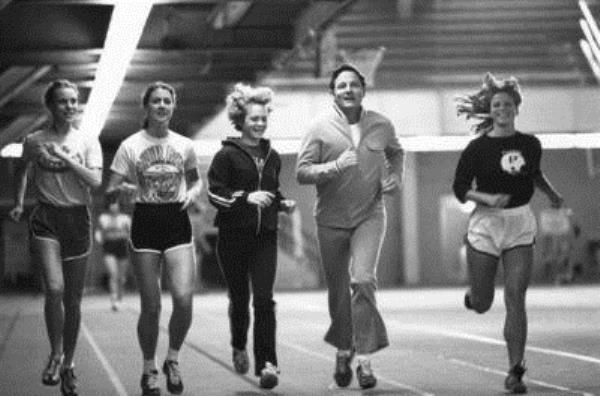|
Birch Bayh called me at the Times about a decade ago. I was curious why a former US senator wanted to talk to a sports columnist, and of course I called him back.
Now I can’t remember the reason he called. His obituaries this week praise him as a major force on Title IX, which has enriched sports for women – for everybody – in America, but I don’t recall him presenting himself as the Title IX guy. Whatever it was about, we schmoozed for a bit. I told him I had covered his re-election in 1970 and I determined that this son of Indiana was now living on the Eastern Shore of Maryland. As long as we were chatting, I had a question for him. It went something like: “Senator, could I ask you a question about politics? I’m looking at all this Tea Party business, and it seems that some of the new members of Congress hate government, can’t even stand being in Washington, just want to shut things down.” He was diplomatic, did not go fire-and-brimstone on me. After all, he was known as a very moderate Democrat; he had to be, to win in Indiana. But he allowed that he had never seen anything like the antipathy between Democrats and the new Republicans, wandering around brandishing mental pitchforks. He recalled with a tinge of sadness that he always had friends across the aisle. That made me think about legendary friendships between Ted Kennedy and Orrin Hatch, Lyndon Johnson and Everett Dirksen, Dick Durbin and John McCain (once again being vilified by Donald Trump.) On the phone, Birch Bayh sounded reflective, maybe even sad, recalling better political times, and then we said goodbye. But his brief comments fueled my sense that things were not as mean in the 1970s when I had a brief fling as a national correspondent. There were giants in those days, on both sides of the aisle. I keep a mental list of Republicans I met, or covered, and admired, mostly from Appalachia and the border states I covered: I covered the retirement announcement of Sen. John Sherman Cooper of Kentucky, a thoughtful gentleman. (One of his aides back then was a young guy named Mitch McConnell, whom I consider one of the most empty and destructive people I have ever seen in public life.) I ran around Tennessee one glorious September afternoon in 1972, covering the re-election campaign of Sen. Howard Baker, who was accompanied by his assistant, Fred Thompson. They were good company, rational people, and Baker became a giant during the Watergate proceedings. When I lived in Louisville, Richard Lugar was a constructive Republican mayor of Indianapolis, just to the north on I-65; later he became a highly positive Senator. Later, I observed Rep. Tom Davis of Virginia, the chairman of the House Committee on Oversight and Government Reform, during the baseball steroids hearings -- a thorough gentleman who later got sick of the nasty politics and retired. In that same period, I spent an hour in the office of Sen. John McCain, during a hearing on Olympic reform, and I retain a strong impression of him as an American hero, despite Donald Trump’s blather – with no retort from Trump’s new best friend, Lindsey Graham. How far we have fallen. * * * Two farewells to Sen. Birch Bayh: https://www.nytimes.com/2019/03/14/obituaries/birch-bayh-dead.html https://www.nytimes.com/2019/03/14/opinion/birch-bayh-constitution.html
bruce
3/19/2019 11:23:49 am
george,
Hansen Alexander
3/19/2019 05:19:41 pm
Yes,
George Vecsey
3/20/2019 08:53:31 am
Bruce, my "brief" time as national correspondent was my call....I realized right away that moving my family from a great town on Long Island was not helpful, and I was not about to move every few years, always be a transplant. To be honest, I also realized I was not a great and diligent reporter who could work on one story for weeks, or jump on stories, leave town with one call from the office. Moving back worked out perfectly -- got great material for books & life....and was able to work for NYT from my strengths. I have huge admiration for more mobile reporters. GV
George Vecsey
3/20/2019 08:57:56 am
To answer Bruce and Hansen, my underlying feeling is that something really ugly has oozed into public life in recent decades --McCarthyism Squared. People like McConnell and Nunes and Jordan and King in the House are what is under the rock....and not total anomalies. People say the higher courts (John Roberts!!) and the military are loyal to traditional discipline and law. I hope that is true. But when I see people like Sasse and Collins fold on the side of under-the-rock, I really get concerned. Not to see the disturbed nature of President Earworm is scary. Onward. GV
george
3/20/2019 10:10:46 am
george,
bruce
3/20/2019 10:19:48 am
george,
George Vecsey
3/20/2019 12:28:18 pm
Bruce: We had just settled into a great town....I missed it, too.
george
3/20/2019 12:51:32 pm
george,
Ed Martin
3/21/2019 05:14:35 pm
In the 1965-81 era when we were in DC and I was working on special education legislation, on “The Hill” and “Downtown,” the atmosphere was very different. Republicans, particularly from the Northeast, were considered “Conservative” perhaps, “Moderate” and I always was able to find bi-partisan support, from Vermont Senators, Winston Prouty, and Bob Stanford; Mass. Senator, Ed Brooke,; New York- Jacob Javits; and the sponsors of the Education of the Education of All Handicapped Act of 1975, included them and the ranking Republican on the House Education Committee, Al Quie, later governor of Minnesota. There were others, in the House and Senate. Silvio Conte, R.Mass. Roomed with Tip O’Neill. Bob Michel, R.ILL. Later Minority Leade, was a plus vote on Appropriations.
bruce
3/21/2019 05:30:00 pm
ed, Comments are closed.
|
Categories
All
|










